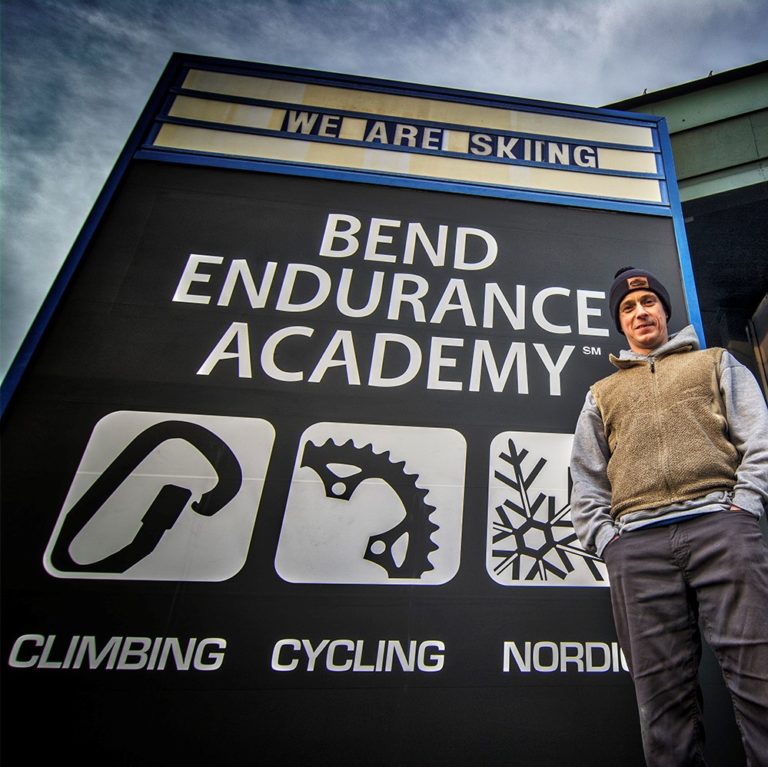The Heart of Climbing Episode 3: "Perseverance" from Max Munchinski on Vimeo.
Vote! Grip List Survey Released
 The fifth annual survey of the most popular climbing hold brands in North America is now available! The Grip List has become the most sought after prize for climbing hold companies and you get to determine who wins.
To determine the Grip List finalists, CBJ is releasing an online survey to the routesetting community so they can vote for their favorite hold and volume brand of the year. All you hold slingers and movement makers are invited to participate and have your favorite hold brand rise to the top!
Vote Now: 2018 Grip List Survey.
Surveys must be submitted by Monday, January 15th, 2018 at Midnight PST.
Vote now and have your voice heard!
The fifth annual survey of the most popular climbing hold brands in North America is now available! The Grip List has become the most sought after prize for climbing hold companies and you get to determine who wins.
To determine the Grip List finalists, CBJ is releasing an online survey to the routesetting community so they can vote for their favorite hold and volume brand of the year. All you hold slingers and movement makers are invited to participate and have your favorite hold brand rise to the top!
Vote Now: 2018 Grip List Survey.
Surveys must be submitted by Monday, January 15th, 2018 at Midnight PST.
Vote now and have your voice heard! Saskatchewan Gets Second Gym

Vertical Solutions’ Bouldering Floor Performance Guide

New White Paper prepared by Vertical Solutions for climbing gym owners looking to maximize their investment in bouldering floors
This week, a new White Paper was released by Vertical Solutions which presents observational results of inspections performed on commonly used bouldering floor cover materials to determine their performance under several important criteria. With the indoor climbing industry continuing to grow at a fast pace, it became clear to The VS Team that bouldering’s popularity will continue to tax flooring systems used at various gyms, and highlight the shortcomings of certain commonly used materials. The Bouldering Floor Material Performance White Paper aims to provide a deeper understanding of important performance qualities of commonly used flooring materials. The qualities analyzed in this White Paper are:- Durability
- Cleanability
- Impact resistance*
- Tear resistance
- Appearance
Planning is Essential
The core audiences for Vertical Solutions’ White Paper are new climbing gym owners currently in the product planning phase, and existing gym owners planning an expansion to additional facilities or looking to replace their current system. For both audiences, the focus is often on maximizing the value of their investment, as flooring systems can commonly reach 50% of the overall costs for climbing-specific products and services. This cost is even more significant when considering the possibility of early replacement due to the unique wear and tear from bouldering usage. For these reasons, understanding the characteristics of cover materials is important to planning for the life cycle and related costs of bouldering flooring. The Bouldering Floor Material Performance White Paper is intended to assist climbing gym owners/operators by expediting the extensive research required to determine what products will meet their needs, by providing an understanding of material performance to make a cost-benefit determination. Although there is no one “silver bullet” material, an understanding of the qualities of the common materials will aid climbing gyms and other users in making decisions that best fulfill their goals. The Bouldering Floor Material Performance White Paper is available as a free download from Vertical Solutions. To learn more about Vertical Solutions offerings, including the ones mentioned here, visit the VS Climbing website.*The White Paper does not provide testing as to any fall impact or other safety qualities of the materials.
This story was paid for and produced by the sponsor and does not necessarily represent the views of the Climbing Business Journal editorial team.
Momentum To Open SLC Bouldering Gym
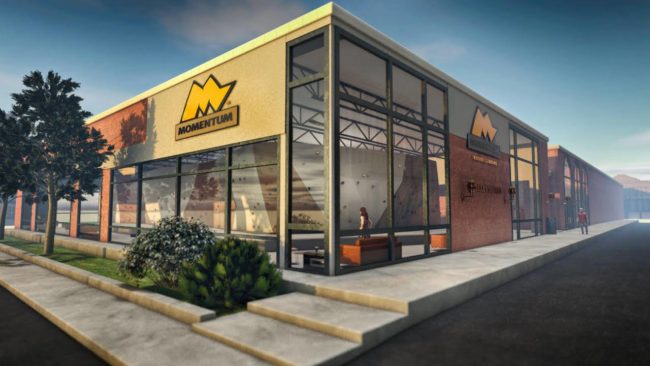
A Line is Drawn For Flooring Standards
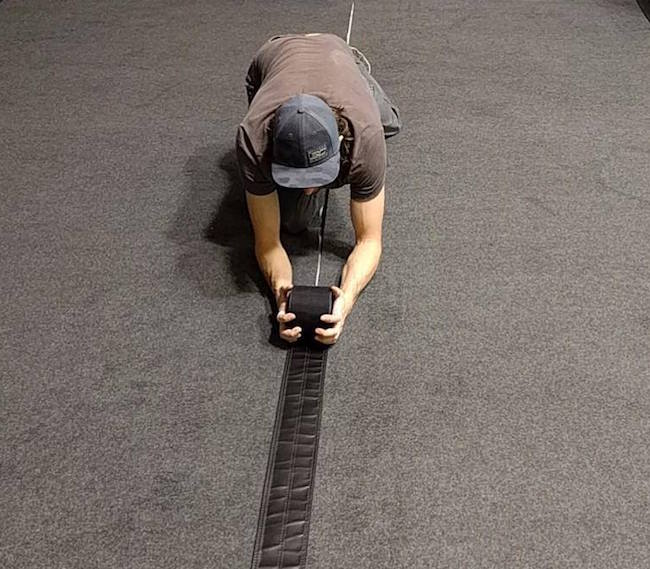 By John Burgman
There are few aspects of a gym that serve more purposes than flooring. At times a steward of worst-case scenario protection on a lead wall, a floor also has the utilitarian purpose of supporting repeated falls in a bouldering area. Add to all of this the fact that the foam itself is a highly nuanced product (closed-cell, open-cell, innumerable thicknesses), and you have enough variance to make reaching any agreements on the subject a tough challenge.
This was brought to light recently in an industry-wide discussion that began with an open letter addressed to gym owners by Touchstone Climbing’s CEO, Mark Melvin. In the letter (attributed to “Touchstone Management”), Melvin noted that recent gym industry growth has resulted in, “a wider variety and a larger number of participants, as well as the ongoing development and evolution of climbing facilities and safety mechanisms.” Melvin pointed out that the gym industry currently lacks any precise standards that would ultimately curve flooring toward some semblance of consistency.
Melvin continued: “We find it disturbing that an increasing number of gyms are opting for a more minimal approach with regard to padding…settling for only a couple inches of closed cell foam directly over concrete.” Melvin did not specify which gyms he was referring to, although he did provide data from a test performed at Touchstone Climbing by gym flooring company Flashed—showing that among other things, 2-inch carpet-bonded closed cell foam by itself exceeded an arbitrary force (200g’s) at as low as 7.2-feet above ground. In other words, according to the data provided, such minimal padding is inadequate for substantial or high falls, and is potentially extremely dangerous.
There was no singular issue that prompted Melvin to pen the letter, as he told Climbing Business Journal that flooring is something he has been thinking about for years. In the letter, Melvin did not explicitly call for industry-wide standards for flooring to be adopted at this point, nor does he think flooring is particularly contentious. “I don’t know if this issue is particularly divisive,” he said. “If so, I guess we’re learning it now. We don’t think it should be.”
Regardless, Melvin’s letter did prompt a swarm of varied response letters and statements from flooring companies in reply to the notion of standardization and testing. For example, Shad Burnham, Sales Director at Vertical Solutions, offered a statement to Climbing Business Journal that read in-part: “Vertical Solutions does offer a range of route flooring options for our clients to choose from, based on their needs and own risk management. Our clients are free to choose about any padding thickness for both their bouldering and route flooring, from two inches to more than two feet.” It’s important to note that Burnham also said Vertical Solutions would support any efforts to establish industry-wide “route flooring safety recommendations,” although the hope would be for independent testing on the matter.
By John Burgman
There are few aspects of a gym that serve more purposes than flooring. At times a steward of worst-case scenario protection on a lead wall, a floor also has the utilitarian purpose of supporting repeated falls in a bouldering area. Add to all of this the fact that the foam itself is a highly nuanced product (closed-cell, open-cell, innumerable thicknesses), and you have enough variance to make reaching any agreements on the subject a tough challenge.
This was brought to light recently in an industry-wide discussion that began with an open letter addressed to gym owners by Touchstone Climbing’s CEO, Mark Melvin. In the letter (attributed to “Touchstone Management”), Melvin noted that recent gym industry growth has resulted in, “a wider variety and a larger number of participants, as well as the ongoing development and evolution of climbing facilities and safety mechanisms.” Melvin pointed out that the gym industry currently lacks any precise standards that would ultimately curve flooring toward some semblance of consistency.
Melvin continued: “We find it disturbing that an increasing number of gyms are opting for a more minimal approach with regard to padding…settling for only a couple inches of closed cell foam directly over concrete.” Melvin did not specify which gyms he was referring to, although he did provide data from a test performed at Touchstone Climbing by gym flooring company Flashed—showing that among other things, 2-inch carpet-bonded closed cell foam by itself exceeded an arbitrary force (200g’s) at as low as 7.2-feet above ground. In other words, according to the data provided, such minimal padding is inadequate for substantial or high falls, and is potentially extremely dangerous.
There was no singular issue that prompted Melvin to pen the letter, as he told Climbing Business Journal that flooring is something he has been thinking about for years. In the letter, Melvin did not explicitly call for industry-wide standards for flooring to be adopted at this point, nor does he think flooring is particularly contentious. “I don’t know if this issue is particularly divisive,” he said. “If so, I guess we’re learning it now. We don’t think it should be.”
Regardless, Melvin’s letter did prompt a swarm of varied response letters and statements from flooring companies in reply to the notion of standardization and testing. For example, Shad Burnham, Sales Director at Vertical Solutions, offered a statement to Climbing Business Journal that read in-part: “Vertical Solutions does offer a range of route flooring options for our clients to choose from, based on their needs and own risk management. Our clients are free to choose about any padding thickness for both their bouldering and route flooring, from two inches to more than two feet.” It’s important to note that Burnham also said Vertical Solutions would support any efforts to establish industry-wide “route flooring safety recommendations,” although the hope would be for independent testing on the matter.
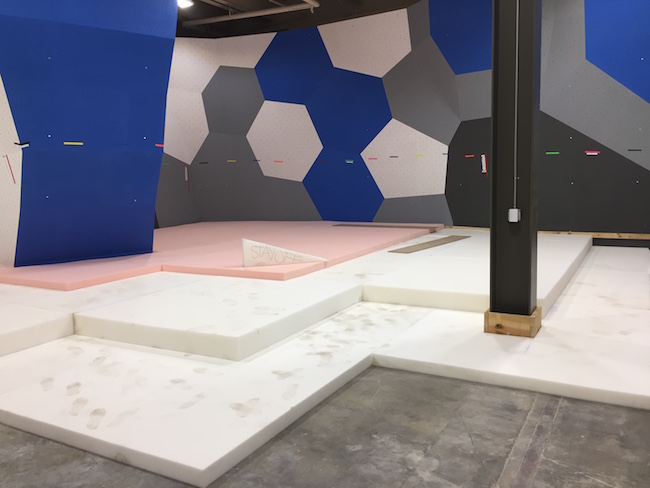
What’s Old is New
To an outsider, Melvin’s letter and the ensuing chatter might make flooring sound like the hot new issue in climbing, but in fact, it’s a topic that has been debated by industry insiders for years. Mike Palmer is the owner of the flooring company Cascade Specialty, and his interest in flooring goes back to when he started a gym in 1996—with pea gravel serving as the floor. He doesn’t necessarily like to interpret the industry as being contentiously split on the issue either, although he does acknowledge that there is variance—at times to a problematic degree—in how gyms are floored. He says the issue of flooring has a history of becoming hot but then fizzling out: “Flashed, Asana, Futurist and myself put together some flooring guidelines at the [Climbing Wall Association] summit five years ago, and submitted them to the CWA for inclusion in their Industry Practices [IP] Manual,” Palmer says. “I was on the IP board and that effort stalled after a year, and as far as I know, there hasn’t been any movement towards guidelines or standards.” Palmer thinks that the CWA is sensitive about instructing its members to upgrade their existing floors to meet any arising standards, but points out that there seems to be an agreement among most flooring providers that establishing guidelines would be a sound starting point. And any standards, if subsequently deemed necessary, could be discussed and possibly adopted after that. Mark Fraser, an executive and engineer at Flashed Climbing—which also contributed to those early proposed guidelines at the CWA summit—points out that flooring guidelines have long been discussed within the industry, but the issue has new urgency now as facilities are constructed to greater heights. “15 years ago, it was rarer to find route climbs over 40 feet, and now is not uncommon to see new facilities at 50 feet or higher,” he says. “Certainly with the increased height comes increased impact forces in the rare cases that someone falls from high on the route walls.”
A Slippery Slope
One gym owner with a valuable perspective on the issue of flooring is David Kortje, who operates the Bliss Bouldering and Climbing Complex in Wichita, Kansas. His gym features flooring designed by Futurist that combines several types of foam. Beyond being a climber and a gym owner, Kortje is also a physician, and the medical industry is rife with its own standards and protocols. He points out that it costs pharmaceutical companies a lot of money to research and develop and test a drug before it hits the market, which contributes to the many complaints about medication being so expensive for consumers in the United States. Inherent in that highly-regulated pharmaceutical industry are lessons—or, at least precautions—that could be applied to the climbing industry. Kortje’s keen understanding of the medical industry contributes to his opinion on whether he would support the adoption of industry standards in gym floors: “No, I wouldn’t support it,” he says. “First of all, who’s going to decide on testing, and by whose standards? And then, are we going to get to a point where we’re using cardboard box flooring that just collapses after a fall? Once you start trying to regulate, you open up a whole can of worms that I’m not sure our industry really wants or could really tolerate. And the other side of it is: financially, how would that work out?” Kortje has a point: Most flooring companies interviewed on the subject acknowledge that gym owners—particularly those whose gyms are not part of a larger franchise—are the ones who might have the hardest time covering the cost of meeting any adopted standards. Randy Englekirk, owner of The Wall Climbing Gym in Vista, California, says perhaps preexisting gyms could be given clemency—a sort of grandfather clause—from flooring guidelines. “I think the idea of an industry standard would be great, but I don’t think there’d be any reason to go through and retroactively ‘decertify’ older systems,” he says. “It’s very likely that older systems would prove inadequate, but isn’t that something most of us already know? If anything, this test would just bring that into the light.” Englekirk also says standards could be advantageous for gym patrons, and “provide customers with some peace of mind that the pad they’re falling on has been tested and approved.” There’s a potential legal component as well. Englekirk notes that law is not his area of expertise, but he wonders if an industry standard for flooring could also prove helpful during any potential litigation related to falls. The topic of falls brings the discussion back to flooring degradation: How and when should gym foam be replaced or repaired? Kortje at the Bliss Bouldering and Climbing Complex notes that he rides a motorcycle—and the safety standard with a helmet is to retire it completely after just a single hit to the head. Replacing a gym’s flooring after each fall is unrealistic, but like a helmet, you sometimes can’t tell just by looking at foam and flooring whether or not it should be replaced. “We’ve looked at our foam after big falls, and we don’t see any changes in it, but I don’t know as far as how big of a hit foam has to have before you decide to replace it,” Kortje says. “How many hits does the foam take before you decide to replace it, and what constitutes a real hit? Is a 10-foot hit a real hit, or does it have to be a 30-foot fall? And what happens when you lower somebody really hard on belay and they hit the ground that way? I don’t think most of that has been answered, or that anyone even knows any answers.” Age degradation is also a concern with foam flooring and comprises any testing criteria performed on new foam. Foam breaks down over the life of the product which causes the foam to behave differently than when brand new. The four flooring systems that were tested by Touchstone, with the help of Flashed all behave dramatically different over time.An Outside Perspective
Given all the complexities, it’s perhaps a little easier to understand why the issue has—according to several flooring company representatives—stalled for years when it comes to the CWA taking any action. Bill Zimmermann, CEO of the CWA, did release his own response statement to Mark Melvin’s letter, and said, “Installing impact attenuating systems (padded flooring) in a climbing facility is an example of minimizing or mitigating the risks associated with a fall…It is clear that padded flooring in a commercial climbing facility is a common industry practice. What is not clear, and specifically not addressed in any CWA publication, are the design and performance requirements for flooring systems for commercial climbing gyms.” Zimmermann’s statement also attributed the CWA’s lack of action related to flooring guidelines or standards over the years to no industry-wide agreement on the requirements for flooring—not among the builders, and not among the commercial gyms. His statement closed with an assertion that it’s time to “develop a rational, consensus-based, minimal standard or set of practices—at the very least a standardized test method for flooring – that owners can specify, designers can design to, and the industry can willingly adopt.” Zimmermann also said the CWA will assemble an Engineering Standards Committee for flooring research this winter. Representatives at several flooring companies are hopeful, acknowledging that most modern gym floor systems are already good. Yet, time will tell whether the variance of opinions will once again prove too great for the CWA to take action, or whether this winter’s committee might prove constructive. Ideally, the CWA should only play a part in the larger process anyway. Michael Gentile is Executive Director at Sports Labs USA—a company that assesses performance surfaces for different athletic endeavors. (Sports Labs USA is the type of independent agency that some proponents of baseline testing for gym floors demand be involved in any conversation. In fact, Futurist Flooring uses Sports Labs to test their bouldering and route flooring systems.) Gentile, who is also a climber, points out that the CWA should look to eventually shepherd a recommendation of guidelines to ASTM International, the organization that develops and promotes padding standards for most other sports. “There’s an ASTM test for wrestling mats, there’s an ASTM test for turf surfaces, for pole vault landing surfaces,” says Gentile. “Certainly an ASTM method is where these things should go [for climbing] in the long run. Standards often start—or are proliferated through—associations, and are often done with the advocacy of associations. But at the end of the day, it’s the ASTM’s test methods that are relied on as a way to assess these surfaces.” But it goes beyond climbing’s sporting aspect. All one has to do is walk into any climbing gym on a given weekend to see a throng of children—having birthday parties, participating in family outings, climbing for fun rather than sport. Yet, playground surfaces—also usually full of kids—are regulated. And to Gentile, that seems illogical. How can a responsible society deem it necessary to regulate where kids play outside, but then not do the same thing when the kids play indoors (at a climbing gym)? Gentile advocates first separating bouldering and climbing, in terms of baseline testing, and looking to Europe as a starting point. (Europe’s standard, for example, requires a gym wall of less than three meters in height to have floor coverage equal to at least two meters, and a wall greater than that height to have floor coverage of at least 2.5 meters, among other points related to padding and fall zones). “Europe is always ahead of things when it comes to sport and comprehensive testing. Playgrounds—same thing, it has always been early-on testing,” Gentile says. “Because people look at [playgrounds] and say, ‘Well, geez, we have to establish protocols so that we’re not having issues that end up hurting the industry as a whole.’” So, the industry is left with a lot to discuss—on a subject that has already been hotly discussed for years. But with these recent developments, the idea of establishing and implementing any flooring guidelines likely has more momentum than ever before—even if the procedure of working with the CWA and eventually channeling recommendations to an ASTM International committee would realistically take a few years, as experts predict. Posing questions and keeping the conversation alive now will drive any future change. “Some of the questions that will need discussion include: What injuries are we seeing in the industry? What type of injuries are we willing to accept? Which ones do we most want to avoid? What can be done with some certainty to lower those injury risks? This will help define what sort of tests will need to be conducted,” says Fraser at Flashed Climbing. “From there: What should we be measuring? G-force? Head Injury Criteria? Angular rotation and acceleration (power)? Force in newtons? It’s worth noting that certainly many tests and values could be measured, but in the end having a simple, quick, and easily performable test will likely have the most support.”Entre-Prises’ Swiss Army Knife of Training
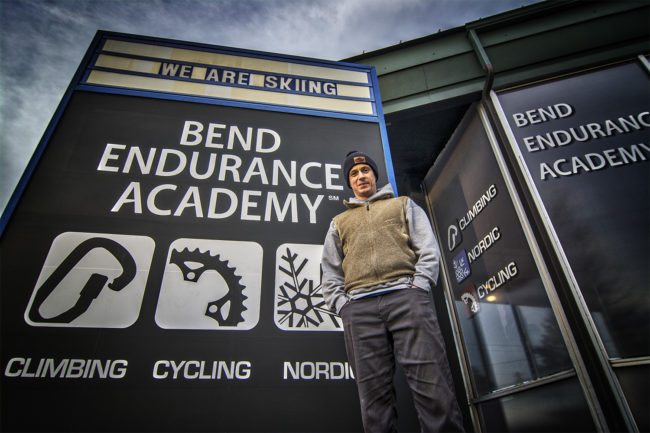
Like Christmas Morning
The first day that Bend Endurance Academy opened its new 7000 square foot training facility for practice, the kids enrolled in the climbing program excitedly ran up to a strange new structure and began climbing and swinging on it. “It was basically like Christmas morning where a kid just opens up a toy and they want to play with it nonstop.” Mike Rougeux, Climbing Director at Bend Endurance Academy, said. This playful structure is known as Monkey Space, a product by Entre-Prises that has recently become available in the United States. Monkey Space is essentially a 10 foot by 10 foot cube made of giant peg boards that allow trainers, coaches, and users to mount different accessories, ranging from climbing holds to pull up bars to swinging rings, without the need for a single tool. Multiple Monkey Space cubes can be arranged next to each other to form larger and more elaborate training arenas. Bend Endurance Academy has two cubes installed to create a course that is 10 feet wide, 20 feet long, and 10 feet high. Bend Endurance Academy (BEA) is the first American partner to utilize Monkey Space. It is a non-profit training organization with the mission to “promote healthy living through active, outdoor experiences.” BEA emphasizes teamwork, personal growth, and community responsibility while coaching people of all ages in the disciplines of climbing, cycling, and nordic skiing. As the organization built its new training center, Rougeux saw Monkey Space on Instagram and realized that it would fit well within the new facility and with the program’s goals. “In essence it provides a multi-use tool for me in the training center without taking up much square footage,” Rougeux said. Since Enter-Prises is also based in Bend, the two organizations were able to arrange a partnership.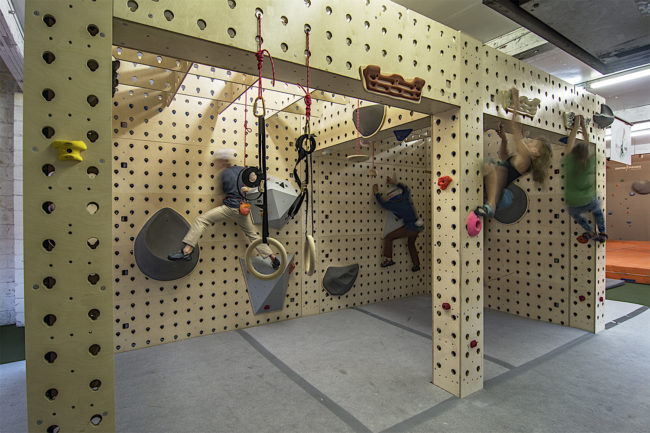 Up until recently, BEA has been partnering with other facilities, such as the Bend Rock Gym, to run its training programs. Now, though they still partner with the local gym for certain events, BEA has its own facility to target and train specific skill sets with more precision. The new facility houses a full strength and conditioning center with free weights and squat racks, an athlete lounge with beanbag chairs and changing rooms, offices for the program directors, and a 3000 square foot climbing center that includes a 48 foot by 12 foot bouldering wall, a tread wall, a systems wall, a campus board, and finally, Monkey Space.
Up until recently, BEA has been partnering with other facilities, such as the Bend Rock Gym, to run its training programs. Now, though they still partner with the local gym for certain events, BEA has its own facility to target and train specific skill sets with more precision. The new facility houses a full strength and conditioning center with free weights and squat racks, an athlete lounge with beanbag chairs and changing rooms, offices for the program directors, and a 3000 square foot climbing center that includes a 48 foot by 12 foot bouldering wall, a tread wall, a systems wall, a campus board, and finally, Monkey Space.
Creating Lifelong Climbers
Bend Endurance Academy’s programs are unique in that some are competition focused and others simply aim to show people to the joys of being active and outdoors. Beginning with kids as young as three-years-old, there are ski and climbing programs that introduce kids to the fun of moving over snow or climbing up walls, and there are Strider bike programs for toddlers to get them started on two wheels. For teenagers attending high school, there are focused training sessions for those who have dedicated themselves to a specific sport and want to improve their skills and compete. Kids can train for climbing competitions, nordic ski races, and cyclocross, cross-country mountain bike, enduro mountain bike, and road bike races. Adult programs are also offered at competitive or introductory levels. “At the end of the day we’re not trying to build competitive climbers,” Rougeux said of his climbing program. “We’re trying to create climbers that are going to go on and be contributing members of the climbing community, they’re going to enjoy climbing, and they’re going to do it in a healthy way for their whole lives.”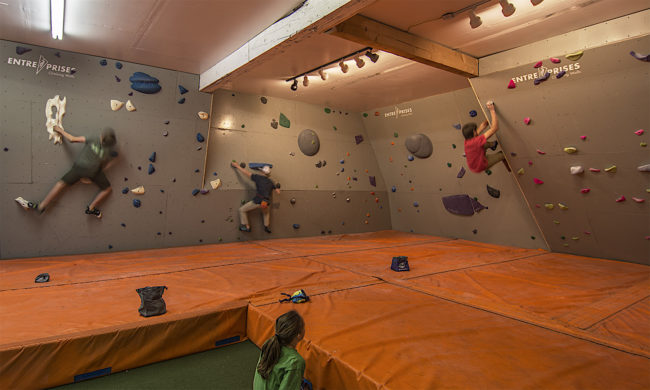 The twin goals of encouraging appreciation for the outdoors and also training unique skills for competition comes with its own problems. For climbing, coaches have to be very specific in the level of difficulty when setting routes because beginners need easier, more accessible routes while more advanced participants require difficult routes that will challenge them and encourage learning. Likewise, the disciplines of nordic skiing and cycling have very different training and conditioning needs. The new facility enables the coaches to develop sport-specific curriculums and ability-tailored programs. The addition of an adaptable tool such as Monkey Space, increases the usability of this facility which has become apparent in the brief time that BEA has put it to use.
The twin goals of encouraging appreciation for the outdoors and also training unique skills for competition comes with its own problems. For climbing, coaches have to be very specific in the level of difficulty when setting routes because beginners need easier, more accessible routes while more advanced participants require difficult routes that will challenge them and encourage learning. Likewise, the disciplines of nordic skiing and cycling have very different training and conditioning needs. The new facility enables the coaches to develop sport-specific curriculums and ability-tailored programs. The addition of an adaptable tool such as Monkey Space, increases the usability of this facility which has become apparent in the brief time that BEA has put it to use.
The Swiss Army Knife of Training
With its many gadgets, Monkey Space immediately appealed to the coaches and the trainees. “Even the parents of the kids that I coach, when they come in to pick their kids up, they want to play on it and want to hang on the swinging rings. Who wouldn’t want to? It’s an adult version of a jungle gym, really.” Rougeux said. However, the real benefit of Monkey Space is the flexibility of its modular design, which also makes it more practical. The locking system allows training courses to be set and changed quickly without needing impact drivers or any other tools, so the courses can be adapted for any type of target training. Rougeux explained that climbing volumes typically retail for over two hundred dollars. In a regular climbing gym, if a setter creates a route with eight volumes, it can be a route that costs several thousand dollars, and the volumes are then locked into that specific route until the setter decides to change it. This ties up the gym’s resources. With Monkey Space, holds and accessories can be moved easily if a route doesn’t work or a course can be changed mid-session. “If I have a three thousand dollar route up on the wall, I can then in five minutes change it and put up another three thousand dollar route on the wall after the kids do the first one,” he said. Similarly, six hangboards can be installed on Monkey Space for a specific finger workout, and then removed for the next session, freeing the facility from establishing a dedicated hangboard station.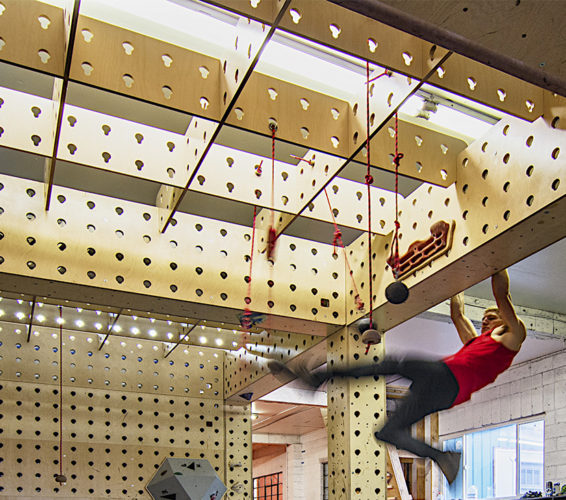 After the initial excitement over Monkey Space, Bend Endurance Academy has begun to use it in a more focused way for training. The suspension features have been used for targeted hanging core workouts and volumes have been installed close to the ground for elevated planks. Kids in the nordic ski program train balance and practice shifting weight from foot to foot by hopping across volumes. Older kids in the climbing program have developed a follow the leader game, where they set a circuit and have their teammates follow them through the course, which along with being fun, active play, also works on coordination and agility.
Rougeux claims that Monkey Space allows him a much wider range of training options and gives him more control over his athlete’s sessions. He uses it equally for beginner climbers during an after school program and with experienced kids training to compete in Nationals, all within the same day. “In one unit I have a T.R.X. training center, a hangboard station, a bouldering wall, and a pull-up bar. It’s kind of like a Swiss Army Knife of training.”
After the initial excitement over Monkey Space, Bend Endurance Academy has begun to use it in a more focused way for training. The suspension features have been used for targeted hanging core workouts and volumes have been installed close to the ground for elevated planks. Kids in the nordic ski program train balance and practice shifting weight from foot to foot by hopping across volumes. Older kids in the climbing program have developed a follow the leader game, where they set a circuit and have their teammates follow them through the course, which along with being fun, active play, also works on coordination and agility.
Rougeux claims that Monkey Space allows him a much wider range of training options and gives him more control over his athlete’s sessions. He uses it equally for beginner climbers during an after school program and with experienced kids training to compete in Nationals, all within the same day. “In one unit I have a T.R.X. training center, a hangboard station, a bouldering wall, and a pull-up bar. It’s kind of like a Swiss Army Knife of training.”
This story was paid for and produced by the sponsor and does not necessarily represent the views of the Climbing Business Journal editorial team.





